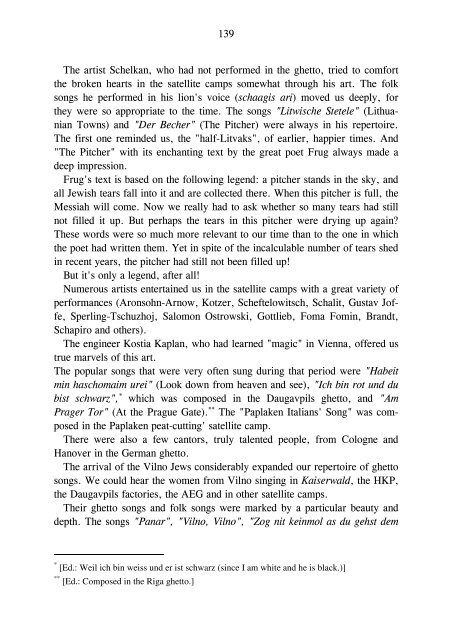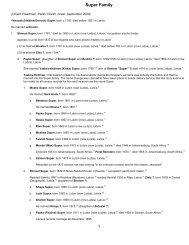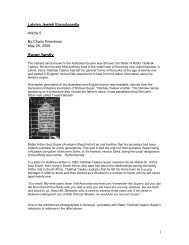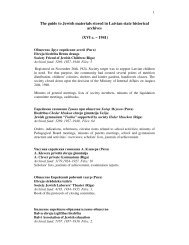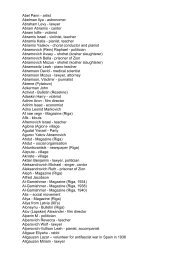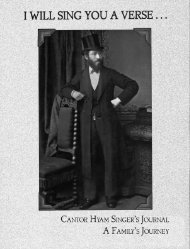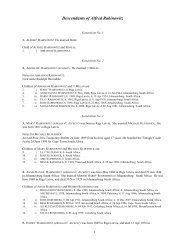Small Riga Ghetto
Small Riga Ghetto
Small Riga Ghetto
You also want an ePaper? Increase the reach of your titles
YUMPU automatically turns print PDFs into web optimized ePapers that Google loves.
139<br />
The artist Schelkan, who had not performed in the ghetto, tried to comfort<br />
the broken hearts in the satellite camps somewhat through his art. The folk<br />
songs he performed in his lion's voice (schaagis ari) moved us deeply, for<br />
they were so appropriate to the time. The songs "Litwische Stetele" (Lithuanian<br />
Towns) and "Der Becher" (The Pitcher) were always in his repertoire.<br />
The first one reminded us, the "half-Litvaks", of earlier, happier times. And<br />
"The Pitcher" with its enchanting text by the great poet Frug always made a<br />
deep impression.<br />
Frug's text is based on the following legend: a pitcher stands in the sky, and<br />
all Jewish tears fall into it and are collected there. When this pitcher is full, the<br />
Messiah will come. Now we really had to ask whether so many tears had still<br />
not filled it up. But perhaps the tears in this pitcher were drying up again?<br />
These words were so much more relevant to our time than to the one in which<br />
the poet had written them. Yet in spite of the incalculable number of tears shed<br />
in recent years, the pitcher had still not been filled up!<br />
But it's only a legend, after all!<br />
Numerous artists entertained us in the satellite camps with a great variety of<br />
performances (Aronsohn-Arnow, Kotzer, Scheftelowitsch, Schalit, Gustav Joffe,<br />
Sperling-Tschuzhoj, Salomon Ostrowski, Gottlieb, Foma Fomin, Brandt,<br />
Schapiro and others).<br />
The engineer Kostia Kaplan, who had learned "magic" in Vienna, offered us<br />
true marvels of this art.<br />
The popular songs that were very often sung during that period were "Habeit<br />
min haschomaim urei" (Look down from heaven and see), "Ich bin rot und du<br />
bist schwarz", * which was composed in the Daugavpils ghetto, and "Am<br />
Prager Tor" (At the Prague Gate). ** The "Paplaken Italians' Song" was composed<br />
in the Paplaken peat-cutting' satellite camp.<br />
There were also a few cantors, truly talented people, from Cologne and<br />
Hanover in the German ghetto.<br />
The arrival of the Vilno Jews considerably expanded our repertoire of ghetto<br />
songs. We could hear the women from Vilno singing in Kaiserwald, the HKP,<br />
the Daugavpils factories, the AEG and in other satellite camps.<br />
Their ghetto songs and folk songs were marked by a particular beauty and<br />
depth. The songs "Panar", "Vilno, Vilno", "Zog nit keinmol as du gehst dem<br />
* [Ed.: Weil ich bin weiss und er ist schwarz (since I am white and he is black.)]<br />
** [Ed.: Composed in the <strong>Riga</strong> ghetto.]


